Diamond basic attributes – The 4Cs
4C represents Color, Clarity, Cutting and Carat. The 4Cs are the shared common attributes used by different grading institutes, to determine the quality and value of each diamond. Therefore, it is crucial to know the 4Cs before buying a diamond.
Carat
Carat is the weighting unit of a diamond, as below:
1 carat = 0.2 grams = 0.007 oz.
Bigger diamonds are rarer, as such, the value per carat will also be higher. For example, the value of a 1 carat diamond would be much higher than the total of two 0.5 carat diamonds.
The weight of a diamond affects its size, although the same weight may lead to different sizes, the following table shows the approximate size to weight ratio:

Clarity
Clarity refers to the inclusion and blemishes of a diamond; the level of clarity is determined by the number, size, place, whether it is obvious and the general effect of those inclusions and blemishes to the appearance of a diamond. Since diamonds are formed naturally, the formation process would usually include some other substances which lead to so called crystals, feathers inside a diamond. Better clarity gives a higher value of a diamond.
The GIA Clarity Scale contains 11 grades. In determining a clarity grade, the GIA system considers the size, nature, position, color or relief, and quantity of clarity characteristics visible under 10× magnification.
- Flawless (FL) – No inclusions or blemishes are visible to a skilled grader using 10× magnification
- Internally Flawless (IF) – No inclusions and only blemishes are visible to a skilled grader using 10× magnification
- Very, Very Slightly Included (VVS1 and VVS2) – Inclusions are difficult for a skilled grader to see under 10× magnification
- Very Slightly Included (VS1 and VS2) – Inclusions are minor and range from difficult to somewhat easy for a skilled grader to see under 10x magnification
- Slightly Included (SI1 and SI2) – Inclusions are noticeable to a skilled grader under 10x magnification
- Included (I1, I2, and I3) – Inclusions are obvious under 10× magnification and may affect transparency and brilliance

Since the diamond with “Included” grading includes quite obvious inclusion, we do not recommend and also do not offer diamonds with Grade I1 , I2 & I3 , except customers request us to provide.
Color
It refers to the level of colorless of a diamond. The rating is from D to Z. For D color, the best color level, representing colorless and continues with increasing presence of color to the letter Z, or light yellow or brown, as shown below:

Cutting
Color and clarity are born naturally with a diamond; however, on the other hand, Cutting is determined by the craftsmanship the diamond receives, which is an important factor to lead the diamond to sparkling perfection. The cutting factor involves complex determination, as a value factor, though, it refers to a diamond’s proportions, symmetry and polish.

The proportions of a diamond refer to the relationships between table size, crown angle and pavilion depth. A wide range of proportion combinations are possible, and these ultimately affect the stone’s interaction with light.
GIA diamond graded cutting into 5 categories, from Excellent to Poor.
Different shapes of diamonds

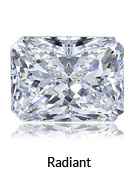

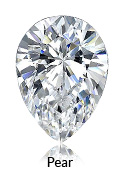

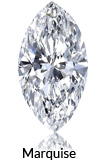


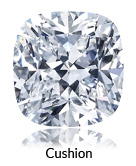
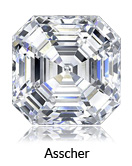
What is a diamond
- a precious stone consisting of a clear and colorless crystalline form of pure carbon, the hardest naturally occurring substance
- natural diamonds are formed at high temperature and pressure at depths of 140 to 190 kilometers (87 to 118 mi) in the Earth’s mantle
- the growth occurs over periods from 1 billion to 3.3 billion year
- A perfect gift to express your love something which can be cherished for generations an investment which is also a luxury. the only luxury with appreciative value
Where are diamonds found
today diamonds are mined in about 25 countries, on every continent but Europe and Antarctica. Hower, only a few diamond deposits were know until the 20th century, when scientific understanding and technology extended diamond exploration and mining around the globe. For 1,000 years, starting in roughly the 4th century BC, India was the only source of diamonds. In 1725, important sources were discovered in Brazil, and in the 1870s major finds in South Africa marked a dramatic increase in the diamond supply.Additional major producers now include several African countries, Siberian Russia, and Australia. It is a modern misconception that the world’s diamonds come primarily from South Africa. Hower, diamonds are a world-wide resource, The common characteristic of primary diamond deposits is the ancient terrain that host the kimberlite and lamproite that bring diamonds to Earth’s surface
How diamonds are mined



